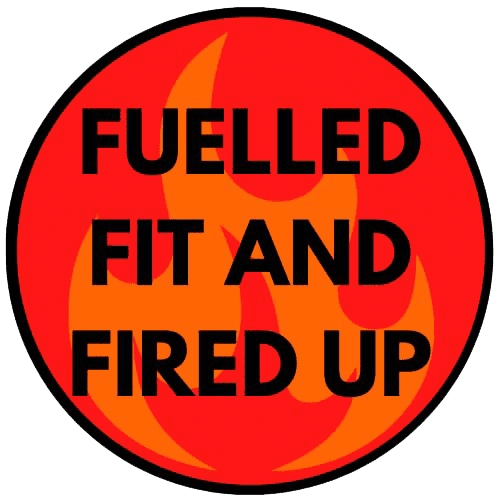
Dare To Be Different
People are choosing to buy from you and your business for a reason. In fact, there may be numerous motivations for clients and customers to decide your services or products will be better than a rival.
This week’s newsletter is the first of two focusing on how to get ahead of the competition.
How often, if at all, do you reflect on what might be influencing these choices? Or why individuals are choosing a competitor? What are you missing?
Discovering more about how people interact with your business and your rivals is hugely important. Whether it is the purpose you follow, the characteristics of your product, or the value you offer, these all influence decision-making. And understanding your business, competitors, and market and how it can work for you will help inform future strategies to make the most of your competitive advantage.
What is Competitive Advantage? And Why Is It Important For Your Business?
Since 2020, technology adoption has made the world more interconnected. Firstly, it was to stay in touch with family, friends, and colleagues through a global pandemic. Now, businesses use it to their advantage and break into markets that they never previously considered.
Establishing a competitive advantage has never been more crucial, with businesses regularly competing with domestic and overseas rivals. This increased competition means establishing a unique value proposition to attract new business while retaining current customers or clients is paramount to growing any company, regardless of size.

Competitive advantage gives your business the edge over your rivals, making you stand out in your marketplace. It may be technological expertise, five-star customer service, or simply good value for money, making your products and services more attractive to your potential consumers. Providing a solution to their problems that combines all the various factors they consider before buying creates value they are willing to pay for. And this is the winning combination.
Types of Competitive Advantage
When reviewing where your competitive advantage lies there are three simple, straightforward, and generic approaches.
- Cost
- Differentiation
- Focus, a combination of cost and differentiation
Cost
Using cost leadership focuses purely on price to become the producer at the lowest cost, allowing you to offer the lowest prices to customers and clients. Thereby providing it with a competitive advantage.
Operational efficiencies underpin cost leadership, which targets a reduction in the cost per unit. You may look at supply chain efficiency, the introduction of refined processes, or trimming employee numbers. With cost being the primary factor, there is a risk you lose sight of quality and reliability. This ‘no-frills’ approach may result in dissatisfied customers, affecting company image and customer retention.
To make this strategy successful, you must utilise economies of scale, which is why mass markets industries such as retail or manufacturing lead in this space. So, if your business sells bespoke handmade products, this approach is probably not for you.
Differentiation
Differentiation comes in many forms. You may focus on high quality, superior customer service, or better reliability. Anything that makes your products or services different from your rivals can give you a competitive advantage. By offering a contrasting value proposition you can attract customers and clients willing to pay more for quality. Your USP (unique selling point) helps justify the price tag.
Companies operating under a differentiation strategy often exploit new trends in the market. Think how Apple revolutionised how we consume media and entertainment, establishing a globally recognised brand. But, while differentiation helps set a business out from its rivals, it has to be backed up by promotion, marketing, and awareness. There is no point in having the best product in your marketplace if no one knows about it!
Focus
A focus strategy combines cost and differentiation to target a niche, a small segment of a larger market where certain demographics have specific needs. Homing in on a reduced market with discrete requirements means you can focus less on price sensitivity and turn your attention to increased quality.
With these markets under-served, customers or clients are often willing to pay higher prices for quality products and services. And limited competition creates a natural monopoly. Start-up businesses take advantage of a focused approach due to this lack of competition and operate without the risk of larger organisations competing on price.
How You Can Create Competitor Advantage

Brand
Become a business that people trust. One that your customers and clients can rely on to deliver quality every time. And remember, being a brand is not always about the company name. It is as much about people and the values they exhibit. Your personal brand is crucial for all business owners, regardless of whether you are an FTSE 100 CEO or the founder of a start-up business.
Customer Experience
Customer experience is not all about faults, returns, and errors. A customer or client journey starts from the first time they engage with your business. It could be by phone, landing on your website, or a personal visit. First impressions count, and they can alleviate any problems that occur later. Brilliant customer service will enhance your business and put you ahead of the competition.
Leadership
Lead from the front and set the example you want your people to follow. Ensure you engage with the team regularly, provide motivation to succeed, and encourage their development. Happy teams deliver fantastic results, outstanding customer experiences, and brilliant products and services.
Distribution Network
A quality distribution network is crucial to goods getting delivered in a timely manner to suppliers and buyers. Time-sensitive goods such as fresh food need to arrive at suppliers and consumers rapidly, so firms that can guarantee consistency can put themselves ahead of their rivals.
Economies of Scale
As your business grows, not only does your brand awareness increase, but economies of scale allow the negotiation of lower prices from suppliers. This cost advantage benefits the organisation two-fold. Firstly, you can increase market share by charging a lower price to customers. Secondly, margins can be enhanced, increasing profitability.
Location, Location, Location
Choosing the correct location can result in reduced lead times and costs, which improve efficiency in the operation. Being the only provider of your product or service in immediate proximity can deliver a significant competitive advantage.
Technology
Whether a patent, specific recipe, or business process, owning your technology provides any business owner with a competitive advantage.
Daring to be different has a significant influence in establishing, growing, and sustaining your business. Next week I will share some straightforward techniques that can help you embrace your competitive advantage and unleash the power in your business.
Have a brilliant week!
David Rogers
Founder & CEO, Fuelled Fit and Fired Up Ltd



